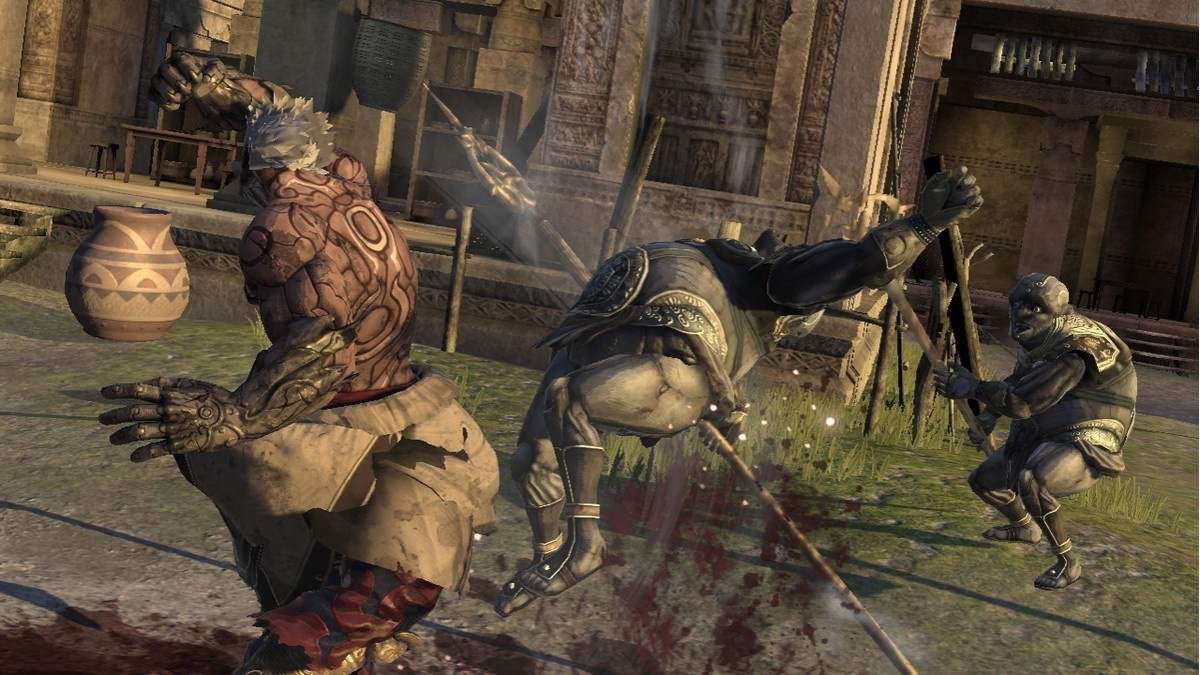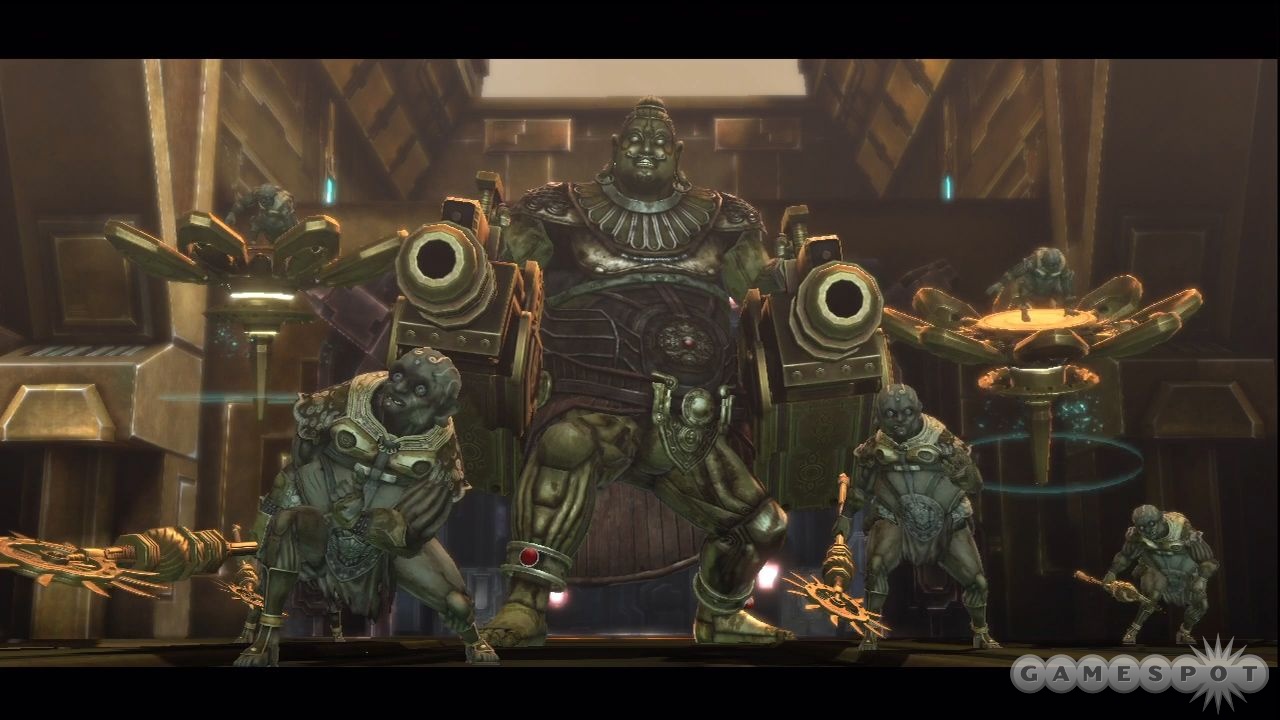Asura's Wrath might seem like a game firmly engaged in the throes of an identity crisis. It balances delicately on the line that separates interactive movie from game in an attempt to buck the negative connotations generally associated with the former characterization and its love affair with quick-time events. But the reality is that Asura's Wrath gnashes its teeth, plants its feet, and pummels that line into a fine powder with a flurry of punches as it confidently declares itself an interactive movie first and game second. Unfortunately, that prioritization means the traditional action parts aren't much of a selling point. The mostly hand-to-hand combat system is shallow and repetitive to the point that it isn't any more intricate than the quick-time events dominating the rest of the game, and the surprisingly satisfying story becomes the sole reason to see Asura through to the end of his journey.
That's not to say the plot is a beacon of originality. Asura's Wrath makes excellent use of inspiration from various forms of Asian mythology, but the overarching themes are typical of popular anime. The dialogue is predictably festooned with non sequiturs from a hero who not only seeks revenge, but also discovers previously untapped power when suitably provoked by those who seek to subdue him. It's a well-worn road traveled by countless heroes and villains before Asura, but it's that familiarity, as well as the knowledge of what's unfolding, that breeds a sense of gratifying nostalgia and comfort.
The question isn't whether or not Asura can defeat the Seven Deities and save his daughter; fans of anime implicitly know the answer from the outset. The real question (and entertainment) comes from how he overcomes the odds when showcased at their outlandish peaks--punching a giant space finger or surviving a stab wound from a sword that stretches from the moon to the Earth are just a few such notable moments.

Asura's use of onscreen button prompts does a great disservice to these otherwise grand events, but that isn't just because they're quick-time events. After all, rhythm games frequently prove that this sort of mechanic allows for creative and effective ways to complement what's happening. Rather, it's the fact that Asura's button prompts rarely ever successfully convey a sense of urgency because they're vaguely related to the action.
They're a distraction, if anything, with the exception of sequences that require the furious tapping of a single face button, which correlates to Asura's infatuation with using his fists to confront life's problems. If the button isn't tapped quickly enough, the virtual tug of war is lost, Asura is eventually defeated, and the rare game over screen then appears. But most cutscenes merely require a simple button tap here or a right analog swish there, followed by a defiant thrust outward on both analog sticks. It's not the most rousing implementation of this sort of interaction and the whole phalange-focused, tap-dancing affair is even less dramatic when failure is often just an inconsequential knock against a skill rating.
Asura's more active combat sequences aren't up to the task of compensating for these shortcomings either because, quite simply, they have plenty of their own. The on-rails shooting segments offer little variety and functionally come down to holding one button down to fire Asura's arm bullets and then intermittently pressing another to fire his arm missiles when target lock-on is achieved. Success is ultimately determined by how quickly this can be done, throwing target prioritization--a key ingredient of a good rail shooter--out the window. Similarly, in the hand-to-hand combat sequences, victory is often a matter of hammering on the punch button while taking the occasional respite to hit the jump button or to engage context-sensitive attacks that also require a single button press.

There's something to be said for the responsive controls and a desire to streamline gameplay mechanics for the sake of accessibility, but what that means in real terms is this: There's no sense of triumph in completing a difficult task. There's absolutely no sense that Asura's godlike powers are ever really at your disposal. There's no sense of accomplishment, save for watching the end credits roll. There's no challenge; no enemies that put up an engaging fight. It's all very safe.
Truth be told, that method of design makes traversing the entirety of Asura's entertaining story relatively painless, but if there were ever an argument to be made against uniform pricing, Asura's Wrath is it. It's a game because its price demands that it be categorized and measured against those relative merits. Yet, when taken for what it really is--an anime film that just happens to use a game engine and some mild interactive mechanics--a price point that competes with similarly themed movies would present Asura's Wrath in a far different, and potentially groundbreaking, light.



